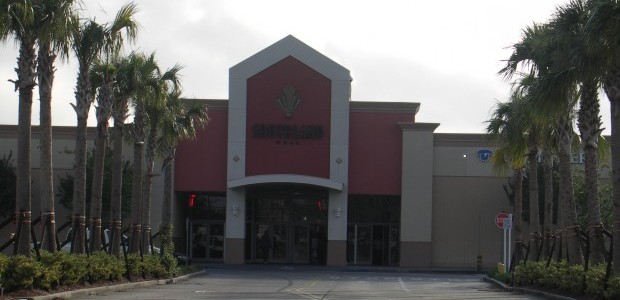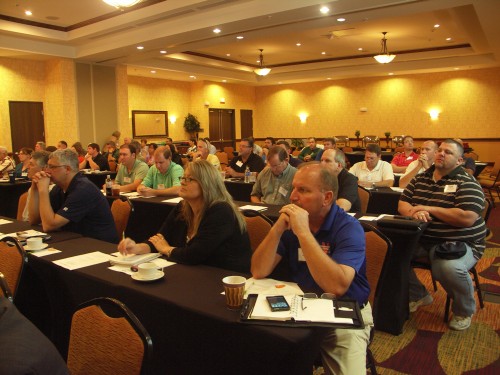Locals get high LABI rating
September 18, 2012
Southland Mall anticipates new store additions
September 18, 2012“I never heard of this group until today,” Bureau of Safety and Environment Enforcement field officer Jason Mathews said. He was preparing to introduce new federal workplace safety standards to members of the South Central Industrial Association and that organization’s corporate guests, just as he has done with other assemblies connected to the offshore oil and gas business.
Mathews’ comment did not seem to concern the more than 150 people who attended a Safety and Environmental Management Systems seminar hosted by the SCIA, along with the Louisiana Oil and Gas Association, last Tuesday in Houma.
“That doesn’t surprise me,” SCIA Executive Director Jane Arnette said. “We are a regional organization, but having an event like this only goes to show how we serve our region.”
“As two groups that have a membership active in the industry this is a significant event,” LOGA Marketing Director Ben Broussard said. “When we can come together and host something so vital as safety, it only goes to show how important it is.”
“Education is part of what we do,” SCIA Executive Vice President and Rig-Chem President Lori Davis said. “So I think it is important to ensure the companies that fall under SEMS training and qualifying requirements understand what the industry wants, what our clients want and how to ensure you bring that back to your companies. To do everything properly and incorporate safety into everyday activities.”
SEMS is run by BSEE through the Bureau of Ocean Energy Management, Regulation and Enforcement. SEMS workshops involve discussion on regulatory requirements for companies developing and implementing oil and gas operations on the outer continental shelf.
The workshop was designed to provide an overview and background of the latest rules oil and gas-related professionals and their contractors are expected to be in compliance with by November 2013.
The SEMS seminar featured not only government spokesmen, but a panel of oil industry experts including Apache Oil managers Wade Broussard, David Dugas and Joel Plauche along with Chevron SEMS Core Team leader Ajay Shah.
Presentations on quality assurance and regulatory issues were also made by SEACOR manager Andre Allemand.
Michelle Martinez with the Louisiana Workforce Commission offered attendees a list of resources to finance SEMS training, which can run in excess of $2,000 per person each year.
“We have always had guidelines we had to work under for master service agreements,” Davis said. “Since [the April 2010] Macondo blowout we have seen an insurgence of more safety, checks and balances, to make sure what we are doing today meets standards while increasing awareness. SEMS is simply a way to incorporate safety standards.”
Broussard said that companies are paying attention to federal regulations and realize how it impacts their business in general. “We are out here to put in a hard day’s work, an honest day’s work and a safe days work,” he said. “To be able to continually educate these guys about what it is to be safe and in compliance helps them better supply their customers and return to their families.”
“For a small business, the SEMS certification is a substantial cost,” Davis said, “but what is the cost of safety? We are creating awareness to the fact that SEMS is important to the operators as well as the service industry. We are bringing this forward to give people an opportunity to learn.”
MMR Group Safety Coordinator Scott Hubbard said he came to see what the SCIA and LOGA SEMS workshop offered and how it fit into his company’s existing safety program. “All the changes and new requirements make safety a dynamic discipline,” he said. “It is not static anymore because things change so fast.”
“I have yet to meet a person who wants to go offshore and risk returning,” Mathews said.
HSE Consultant Philip Pearson was the day’s first speaker. He introduced SEMS to workshop attendees, but offered in his statements what many considered the bottom line. “It is the operator’s responsibility to make sure [workers] are trained before they go on site,” he said.
Pearson said SEMS simply involves hazard analysis, management procedures, training, documentation and safe working practices.
“Safety has always been an important part of the industry’s practice,” Davis said. “Who can afford to have a lost time accident? Who can afford a near miss? No one. Any time these things happen they affect us from an insurability standpoint and also an operating standpoint. We have to train employee safety. The problem we have today is finding skilled and trained workers to do the job in the industry because it is a difficult task.”
Arnette credited Davis and the SCIA Industrial Committee on Education for bringing SEMS compliance to the forefront for regional industry leaders.
Paget Theriot of Labored Marine and Steve Burnet of Motion Industries are among the more than 150 safety specialists to attend the South Central Industrial Association’s Safety and Environmental Management Systems seminar in Houma. SCIA Executive Director Jane Arnette described the event as one of the many services offered to industry by the regional organization.











